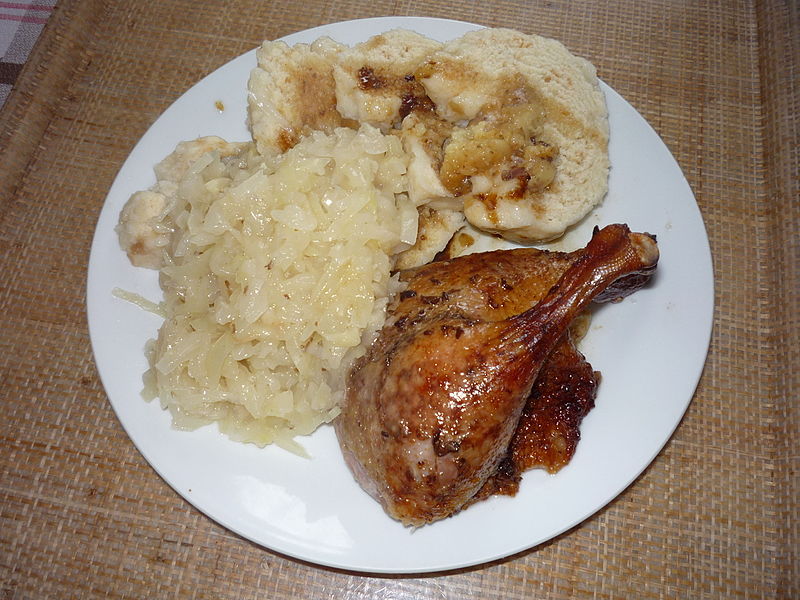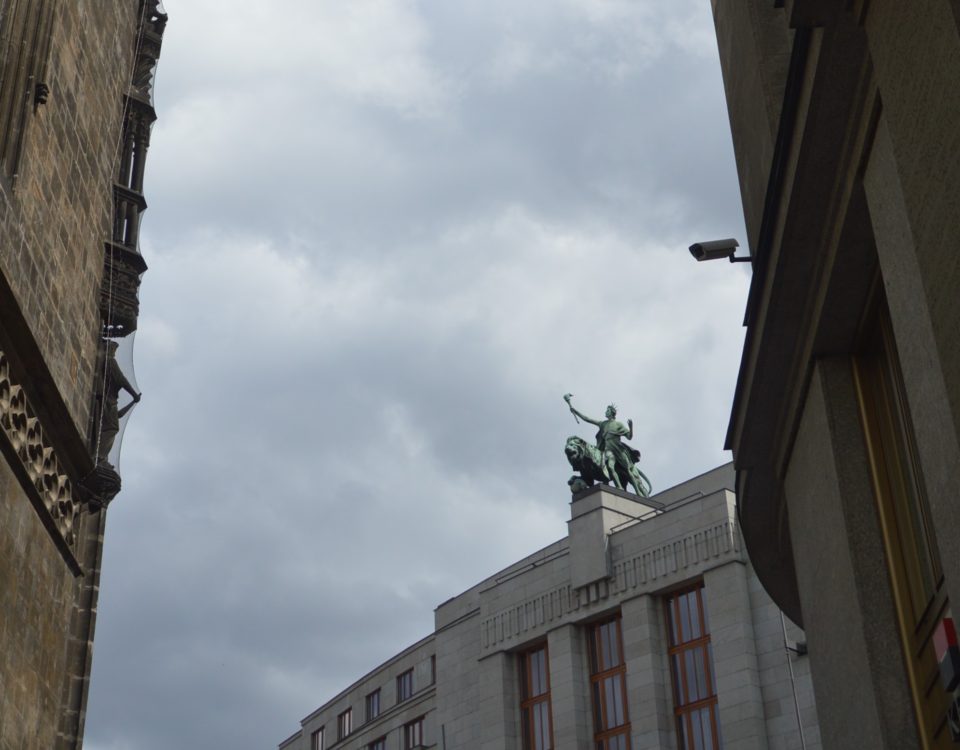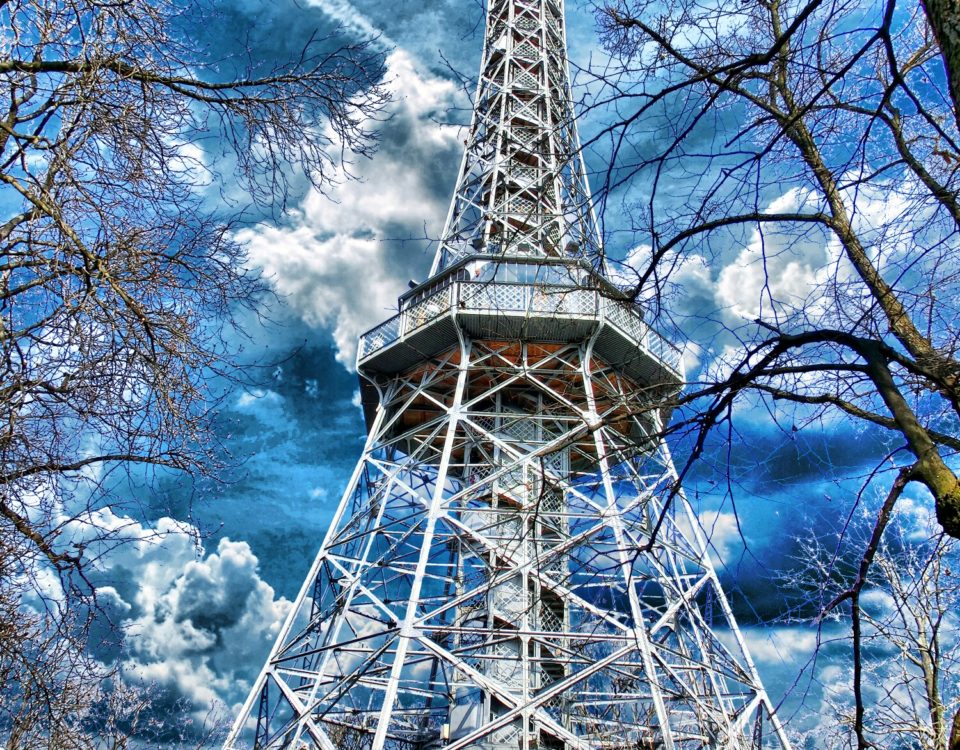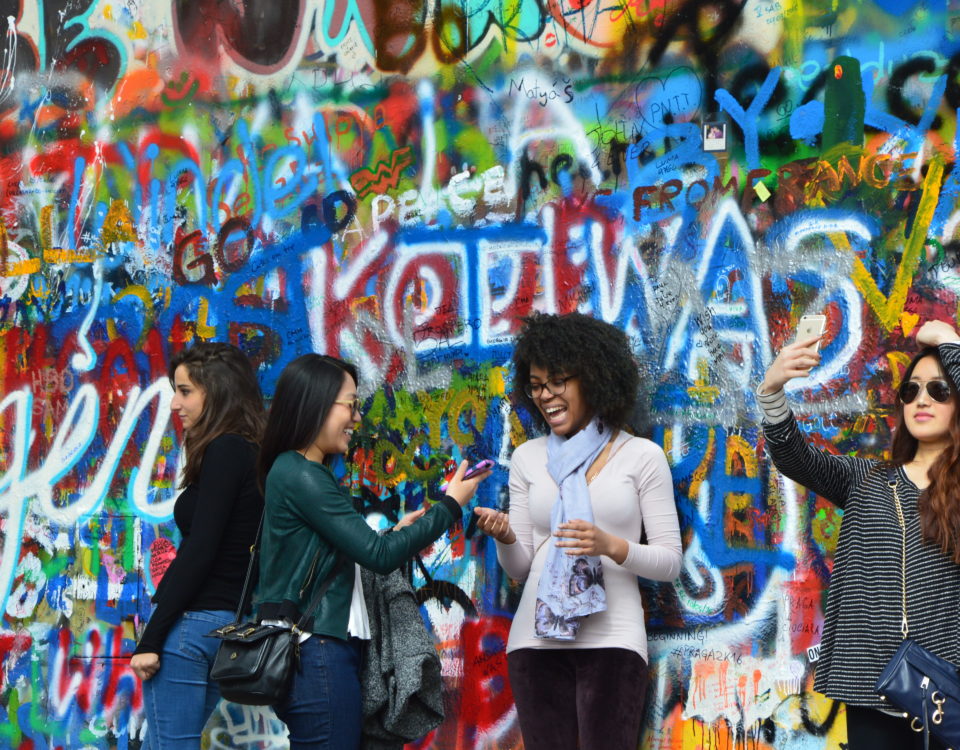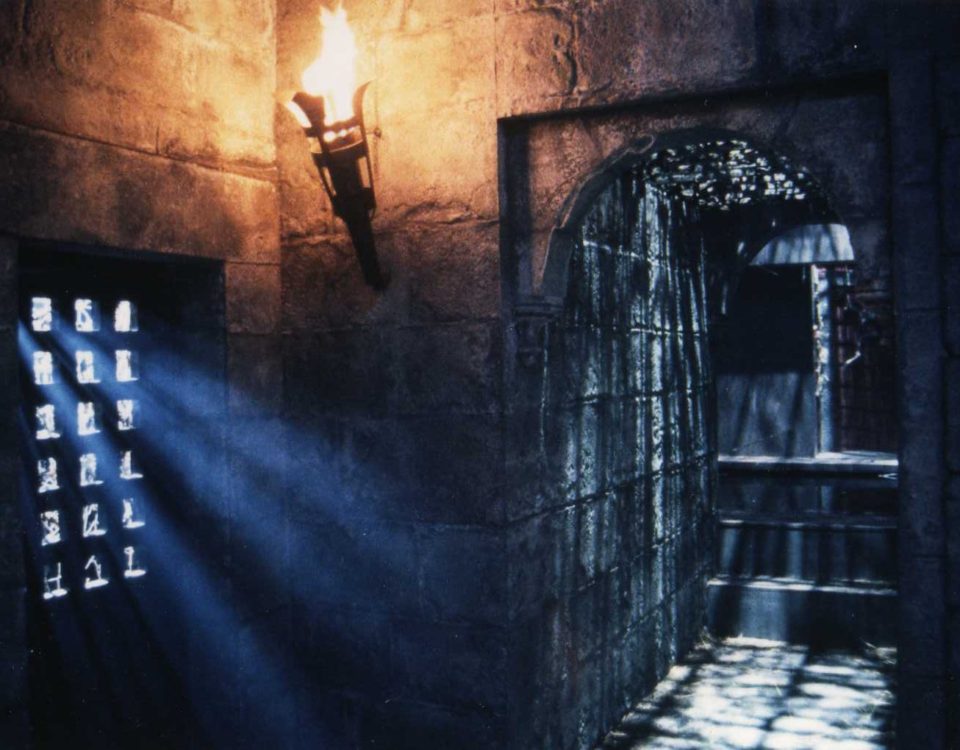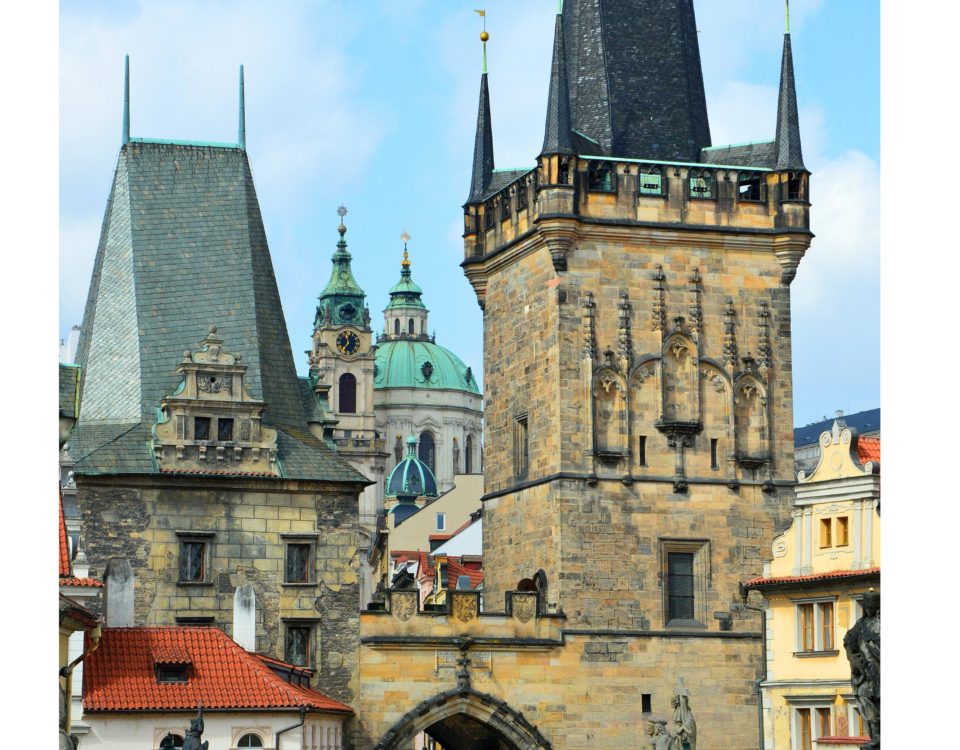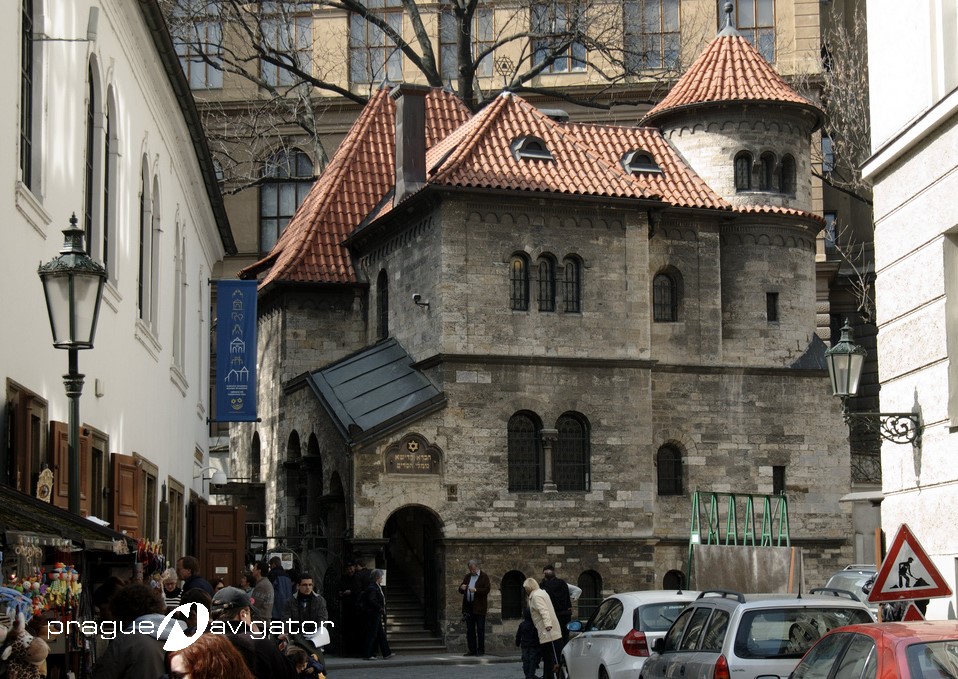September 17, 2016
Duck baked on honey with fresh homemade cabbage, fried onions and Karlsbad dumplings, maybe the most typical meal of Czech cuisine. Czechs enjoy the mystical. Perhaps that is one of the reasons, why Czech cuisine is not so easily traceable. Some people claim that Czech cuisine is actually mostly Austrian. Those would serve you a Vienese schnitzel for lunch. Others see it as primary German. Expect a baked pork with fluffy dumplings and sour cabbage from those. A hungarian influance can not be underestimated, others will cry. A Hungarian goulash with a rich dose of paprika will be their choice for the morning after a late night out. And what about the peasant meals prepared from whatever local climat allows to grow? Potatoes, grains, apples, carp fishes in the Southern Bohemia ponds, trouts in the mountain streams, game in the deep forrests […]
September 17, 2016
Perhaps the finest aspect of the National Bank building is the statue that remains at its crown, called the “Genius with the Lion”. The metal statue perched on the attic gable of the bank at Na príkope 28 was created in 1898. In 1938, it was transferred to the new, present-day bank building. The statue is a symbol of progress and liberalisation of trade. It comprises a figure of a striding genius in a fluttering robe. In Roman mythology, a genius was a tutelary deity or guardian spirit sometimes depicted as a winged or haloed being. The figure is holding aloft a flaming torch. At his side is a lion holding a ball under its front right paw. The ball is marked with the date of the statue. The statue (measuring 4.7 m x 2.9 m x 4.5 m and […]
September 17, 2016
Less a square than a boulevard, Wenceslas Square has the shape of a very long (750 m, total area 45,000 m2) rectangle. The two obvious landmarks of Wenceslas Square are at the southeast, uphill end: the 1885–1891 National Museum Building, designed by Czech architect Josef Schulz, and the statue of Wenceslas. Other significant buildings on the square include: Antonin Pfeiffer and Matěj Blecha’s Palác Koruna office building and shopping center Lindt Building, No. 4, an early work of architectural constructivism the BAŤA shoe store, No. 6, 1929 Adam Pharmacy, No. 8, 1911–1913 Jan Kotěra’s Peterka Building, No. 12, 1899–1900 Pavel Janák’s Hotel Juliš, No. 22, 1926 Alois Dryák’s Hotel Evropa, #25–27, 1905 redesign, with architectural sculptor Ladislav Šaloun Antonin Wiehl’s Wiehl House, No. 34, 1896 the Melantrich Building, No. 36, 1914, where Alexander Dubček and Václav Havel appeared together […]
September 17, 2016
The Slav Epic is a set of 20 large-format Alfons Mucha´s Art Nouveau canvases summarizing the history of Czechs and other Slavic nations. The paintings are inspired by Slavic mythology and history of the Czechs and Moravians. The current installation respects Mucha’s original thematic layout of The Slav Epic, observing the chronological order of its individual parts. In 1928, Mucha devoted the cycle to Prague. Venue: Trade Fair Palace (Veletržní Palace), Great Hall Organizer: The City of Prague with the support of City Gallery Prague Admission: The Slav Epic only – 180 CZK, students – 90 CZK, Trade Fair Palace incl. The Slav Epic – 400 CZK A monumental cycle to which it would be hard to find a parallel elsewhere in the world is now being presented to the general public in its magnificent completeness. The cycle’s thematic range spans a broad […]
September 17, 2016
John Lennon Wall John Lennon wall was a symbol of freedom and rebellion against the communist regime in the 1980´s. It is situated right across the beautiful building of French Embassy near Kampa. The Lennon Wall or John Lennon Wall is a wall in Prague, Czech Republic. Once a normal wall, since the 1980s it has been filled with John Lennon-inspired graffiti and pieces of lyrics from Beatles’ songs. In 1988, the wall was a source of irritation for the communist regime of Gustáv Husák. Young Czechs would write grievances on the wall and in a report of the time this led to a clash between hundreds of students and security police on the nearby Charles Bridge. The movement these students followed was described ironically as “Lennonism” and Czech authorities described these people variously as alcoholics, mentally deranged, sociopathic, and agents of […]
September 17, 2016
Elixir Mystery – Real Escape Maze Elixir Mystery- Real Escape Maze is a realistic escape maze adventure from the time of the Czech king Rudolf II. Travel back in time to Prague’s 16th century under the Charles bridge. Theme: Your team of 2-5 people gets locked in a historical jail, because you were trying to steal his elixir of youth. You have 1 hour to solve clues and get out before they torture and execute you. Find the secret passage to Rudof’s chamber and discover the real Prague’s legend. Experience an unforgetable atmosphere of old Prague in a fun, educative and competitive way. Mostecká 9 Praha 1 www.ElixirMystery.cz e-mail: info@elixirmystery.cz tel: 604 799 999 Opening hours: Every day 10:00 am – 10:00 pm
September 17, 2016
Prague Towers The descriptive names of “Golden Prague” and “City of a Hundred Spires” provide a hint of the nature of this metropolis, where the eyes of visitors and tourists alike are drawn upwards to the towers of the city’s many cathedrals, churches, and gateways. We recommend you to visit you these Prague towers: TV TOWER – The 2nd ugliest building in the world is offering you a unique 360 degree view of Prague from 3 cabins of an interactive Observatory at a height of 93 meters with hanging bubble chairs… PETŘÍN OBSERVATION TOWER – The Petřín Lookout Tower is a 63.5-metre-tall steel-framework tower which strongly resembles the Paris Eiffel Tower. LESSER TOWN BRIDGE TOWER
September 17, 2016
Bohemian garnet, deposit of which are located only in Bohemia, has maintained a unique position due to its nice, fiery red colour and its refractive properties – not to mention its curative effects. Its reputation has been known since the time of Emperor Rudolf II.,
June 18, 2016
The Jewish Quarter (Josefov) Jewish quarter in Prague was formerly the Jewish ghetto of the town. It is completely surrounded by Old Town. The quarter is often represented by the flag of Prague’s Jewish community, a yellow Magen David (Star of David) on a red field. Prague’s Jewish Quarter was originally located in the Castle District but by the 1200s had spread to the Josefov area and was for centuries regarded as a slum. Its transformation into one of the city’s most important and interesting districts took place in the late 1800s when large sections were demolished to make way for Art Nouveau apartment buildings. Jewish quarter / Historical sites: Franz Kafka’s birthplace High Synagogue: 16th-century synagogue It was financed by Mordechai Maisel, and it was finished in 1568, the same year as the Jewish Town Hall Probably it was modelled after High Synagogue, […]

